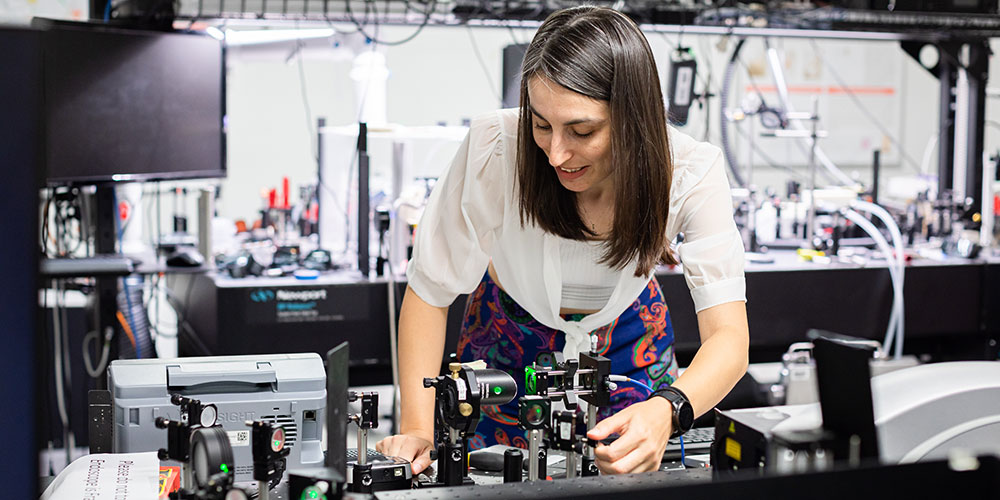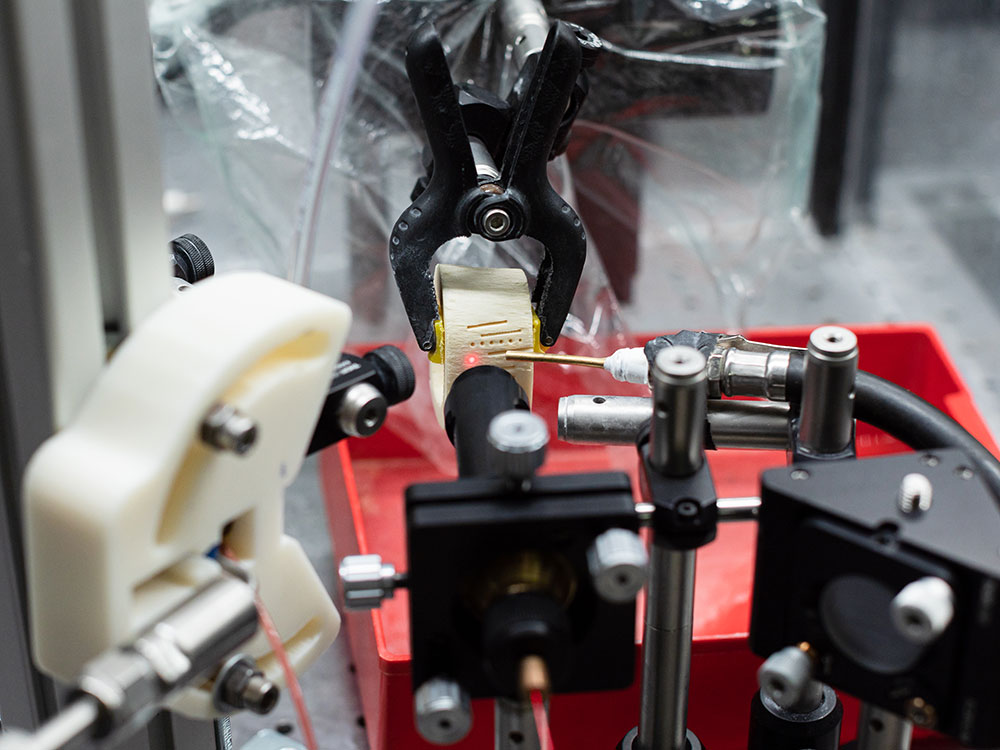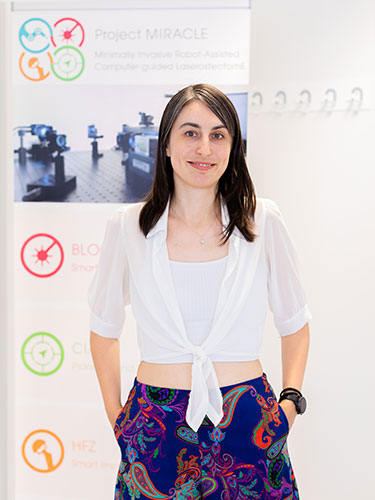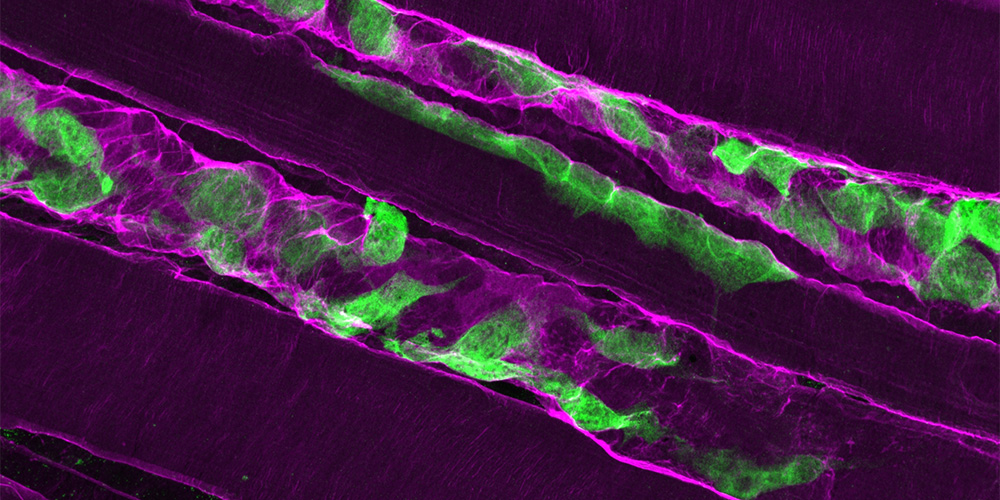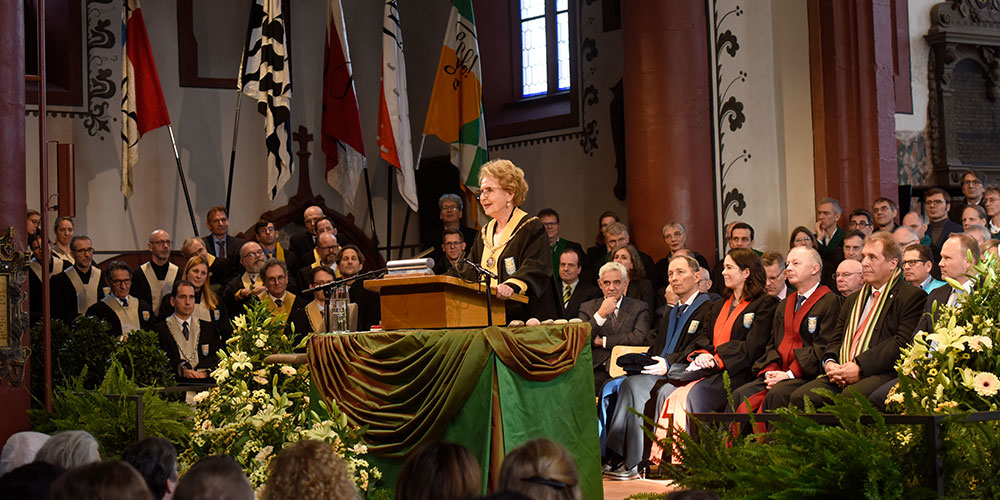In Focus: Ferda Canbaz and her burning passion for lasers
Ferda Canbaz develops lasers for high-precision cutting. Things don’t always go to plan. But that only sparks her ambition all the more. Her research to date focused on investigating different laser materials and developing ultrafast lasers – now she is revolutionizing surgery as part of the MIRACLE team.
09 August 2022
Ferda Canbaz’s work is about explosions: micro-explosions that are initiated on bone by laser. Canbaz isn’t actually aiming to incinerate things, but to cut them: she works as a postdoc on the MIRACLE project. MIRACLE stands for “Minimally Invasive Robot-Assisted Computer-guided LaserosteotomE”. The team is developing computer-controlled lasers that can cut bones with a precision that allows seamless insertion of a personalized implant.
This type of work comes with a cost, due to high energies of the lasers, everything can also catch a fire which happened several times. It’s an occupational hazard.
Not just playing around
Canbaz, 34, discovered her fascination for lasers during her physics studies. For her doctoral thesis, she sought out a research group that would allow her to focus solely on lasers. “We built fascinating lasers but not used them for anything then. I wanted to work on a practical application.”
That is also the aim of the MIRACLE project. Canbaz and the BLOG team (Biomedical Laser and Optics Group) are developing lasers that can cut deep enough into bones to remove sections. At the same time, the lasers have to be as small as possible. “This is killing us at the moment,” she explains with a broad grin. Lasers this small are challenging, so the team members try out different options and adapt them themselves.
Not wanting to seem arrogant
Canbaz speaks about her work with total enthusiasm and brushes off setbacks with a smile. She is not concerned about her future: she took over as head of the BLOG group at the beginning of this year, though her contract with MIRACLE expires at the end of 2022. She is also working on her own project funded by the Faculty of Medicine.
In the meantime, Canbaz has several irons in the fire: she has applied for an SNSF Ambizione project and should hear in the next few weeks whether her project has been awarded funding. She can also continue in the MIRACLE project for a while more. “I still have a lot to do,” she says boldly. Another path is to apply for professorship positions.
However, she doesn’t find it easy to talk about this, fearing she might come across as arrogant. “It’s typical: Women often undersell themselves,” she comments, self-critically. She too finds it difficult to admit her own achievements. When you point out her academic successes, she is quick to respond, “There was a lot of luck involved too.”
A fortunate rejection
Canbaz had wanted to study medicine at university, but the admission restrictions meant she didn’t get a place. Her second choice was physics. “It was meant to be. I was really lucky to end up on that degree program,” she says with hindsight. Canbaz studied in Istanbul, where she also earned her doctorate. Afterwards, she sought an interesting post with a focus on lasers – and found MIRACLE.
She spent her first three years in Switzerland living in Basel, then moved to Zurich. “Zurich is busier than Basel, more similar to Istanbul in that way. I like that,” she comments. Canbaz doesn’t experience homesickness: “When I was 14, I had to go away for school. I’m used to being apart from my family,” she says. And besides, there are two flights a day to Istanbul. “I’m really not that far away.” It was different during COVID, though: not being able to see her family all of a sudden, even when someone was ill, was something she found very difficult. “But thanks to videocalls, we got through it.”
Like a child playing with LEGO
In her current role, Canbaz commutes between Zurich and Basel and combines running experiments with managerial responsibilities. Teaching is also part of her profile as research-group leader. “That’s the part I had most respect for,” she says. “I worked through every weekend preparing lessons. But it was a lot of fun.” And the feedback after the spring semester was good.
The word “fun” comes up a lot when Canbaz is talking about her work: “I’m like a child playing with LEGOs. Before going to the lab there is a lot to calculate and think. Once I start experimenting, it is a game that I want to play and win.” It’s all about taking the right pieces and putting them together – only, for her, the end result is a laser beam that can cremate just about anything.
The cutting laser needs to be paired with a scanning laser: “The laser itself is stupid and doesn’t know what it’s cutting. We need to make it intelligent.” So the second laser scans the tissue under which the first laser will cut, mapping it like an ultrasound. An algorithm enables the robot to learn where it should cut and when it needs to stop. Then it is like a smart lightsaber cutting only the bone.
There’s still some way for Canbaz and her team to go until the lasers are small and powerful enough. Testing their prototypes requires a lot of bones, which they get from the supermarket or butchers: “We buy pork on the bone. We sometimes experiment on the whole meat peace, and sometimes cut the meat away in the lab and scrape out the bone marrow – so we always have a fresh supply of material.”
These fresh samples are used to test how the tissue reacts to laser. Whole meat piece is used to teach the lasers how different tissues (muscle, fat, or bone) look like. Important, because testing a device that is destined, one day, to be used in operations and cut human bones with sub-millimeter precision.
Medieval fairs and science fiction in her spare time
Canbaz is happy to describe herself as a nerd. When she is not working, she does yoga, cycles, hikes, and dresses up and visits the odd medieval fairs. Or watches sci-fi movies and series. “I like many, but some that comes to mind right away are Star Wars, Westworld, Fringe, Arrival.”
Canbaz still has plenty to do: if she gets the SNSF funding, she can spend four more years as a research associate at the university. One alternative is to continue to the MIRACLE project. “I’ve never been someone who makes big plans,” she says with a smile. “Up until now I’ve made the right choices and been lucky – I’ve always ended up in the right places.” May the Force be with her.
In Focus: the University of Basel summer series
The In Focus series showcases young researchers who are playing an important role in furthering the university’s international reputation. Over the coming weeks, we will profile seven academics from different fields – a small representative sample of the 3,000+ doctoral students and postdocs at the University of Basel.

